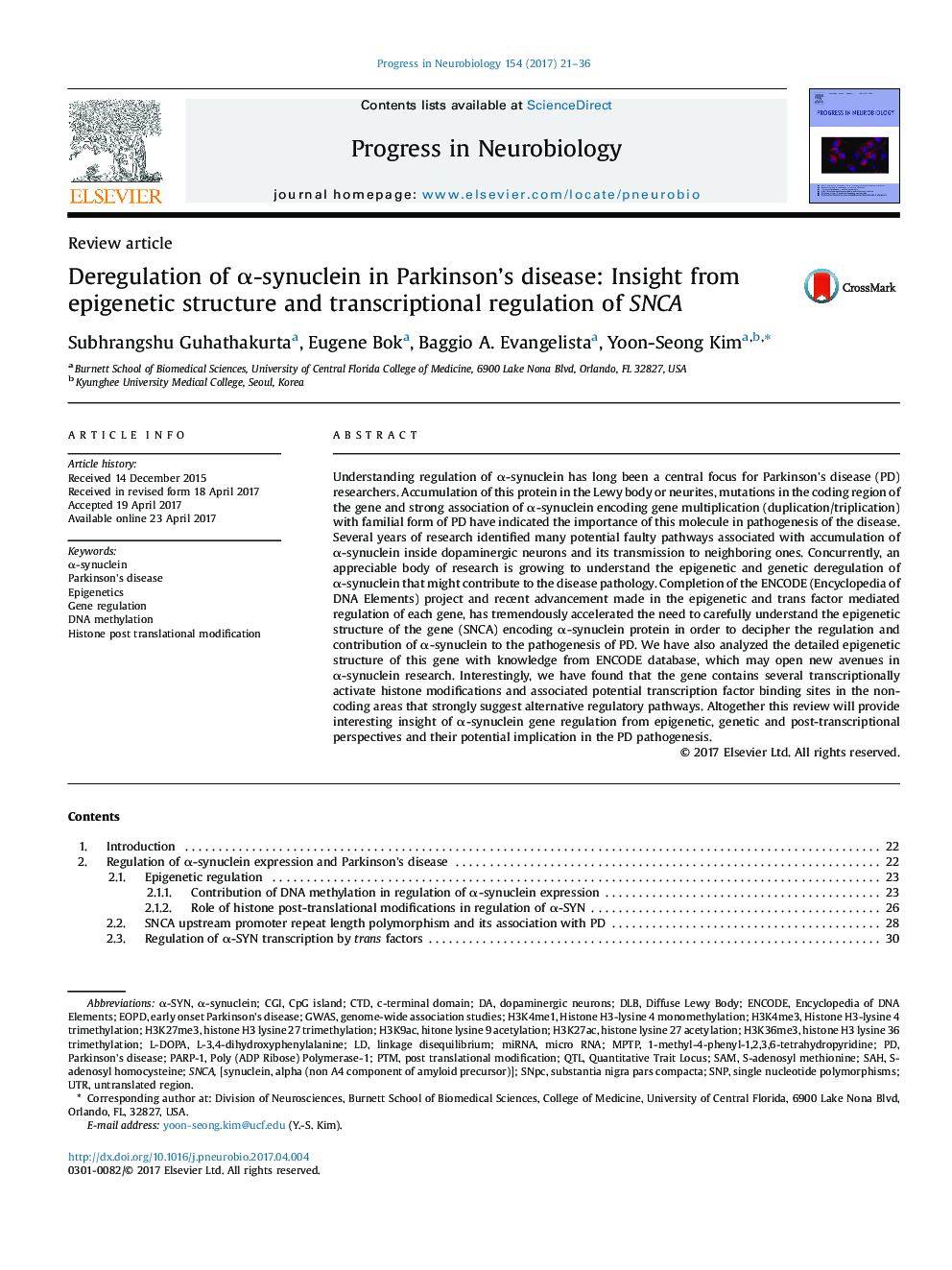| Article ID | Journal | Published Year | Pages | File Type |
|---|---|---|---|---|
| 5739125 | Progress in Neurobiology | 2017 | 16 Pages |
â¢Epigenetic regulation of α-synuclein plays important role in Parkinson's disease.â¢Completion of ENCODE has revolutionized the present concept of SNCA regulation.â¢Histone modifications at SNCA regulatory regions define cell-specific expression.â¢Presence of intronic enhancer elements regulate SNCA expression.â¢Non-coding SNCA variants alter gene expression by interfering epigenetic structure.
Understanding regulation of α-synuclein has long been a central focus for Parkinson's disease (PD) researchers. Accumulation of this protein in the Lewy body or neurites, mutations in the coding region of the gene and strong association of α-synuclein encoding gene multiplication (duplication/triplication) with familial form of PD have indicated the importance of this molecule in pathogenesis of the disease. Several years of research identified many potential faulty pathways associated with accumulation of α-synuclein inside dopaminergic neurons and its transmission to neighboring ones. Concurrently, an appreciable body of research is growing to understand the epigenetic and genetic deregulation of α-synuclein that might contribute to the disease pathology. Completion of the ENCODE (Encyclopedia of DNA Elements) project and recent advancement made in the epigenetic and trans factor mediated regulation of each gene, has tremendously accelerated the need to carefully understand the epigenetic structure of the gene (SNCA) encoding α-synuclein protein in order to decipher the regulation and contribution of α-synuclein to the pathogenesis of PD. We have also analyzed the detailed epigenetic structure of this gene with knowledge from ENCODE database, which may open new avenues in α-synuclein research. Interestingly, we have found that the gene contains several transcriptionally activate histone modifications and associated potential transcription factor binding sites in the non-coding areas that strongly suggest alternative regulatory pathways. Altogether this review will provide interesting insight of α-synuclein gene regulation from epigenetic, genetic and post-transcriptional perspectives and their potential implication in the PD pathogenesis.
